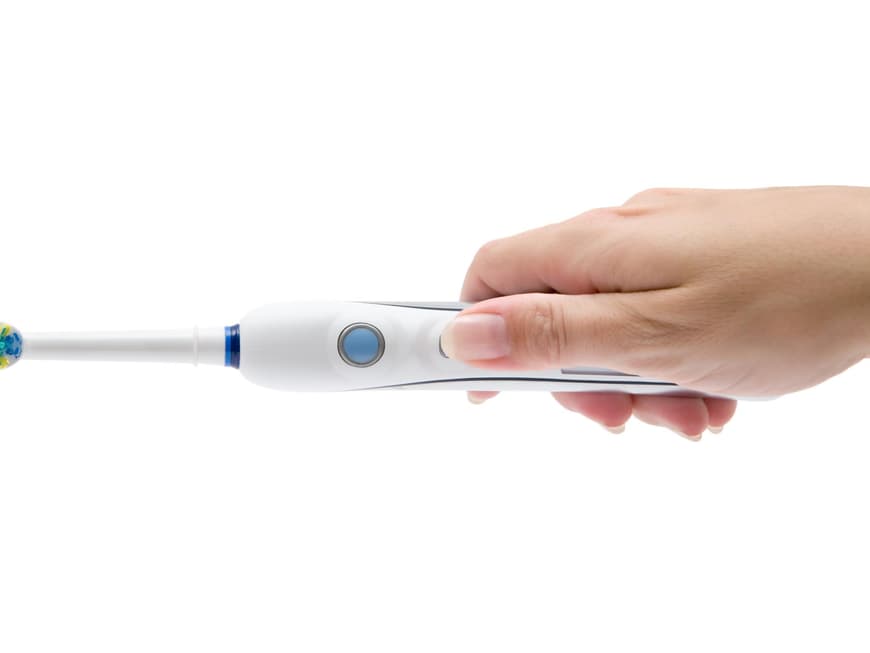
One thing has now been proven: Electric toothbrushes are actually better than manual toothbrushes. After three months, participants in a large study had less bacterial plaque and less inflammation of the gums when using electric toothbrushes. The choice is large, the price differences enormous. What's more, there are now three different technologies that can be used to combat plaque. We do the electric toothbrush test.
Oscillating brush
The classic electric toothbrushes have a round head that rotates back and forth around 5,000 times a minute. This is called oscillation. You have to use it to clean each tooth individually, brushing along the gum line and into every interdental space. If too much pressure is applied, the bristles can injure the gums.
Sonic toothbrush
You don't need any special brushing technique with this, you simply glide over your teeth. The sound makes the head vibrate - it rotates up to 40,000 times per minute. This speed pushes toothpaste and saliva into the spaces between the teeth and cleans them.
Ultrasonic toothbrush
With up to 1.6 million oscillations per minute, they are even faster and more thorough in removing plaque. It is removed by the resulting bubbles. With an ultrasonic toothbrush, however, you need a very special toothpaste.
The toothbrush conclusion
An ultrasonic brush is worth considering, especially for people with very sensitive gums. Otherwise, which model is most suitable depends primarily on the preferences of the individual. In any case, it should no longer be a manual toothbrush. It' s better to use it for other things! And: You shouldn't use a cheap no-name product.
